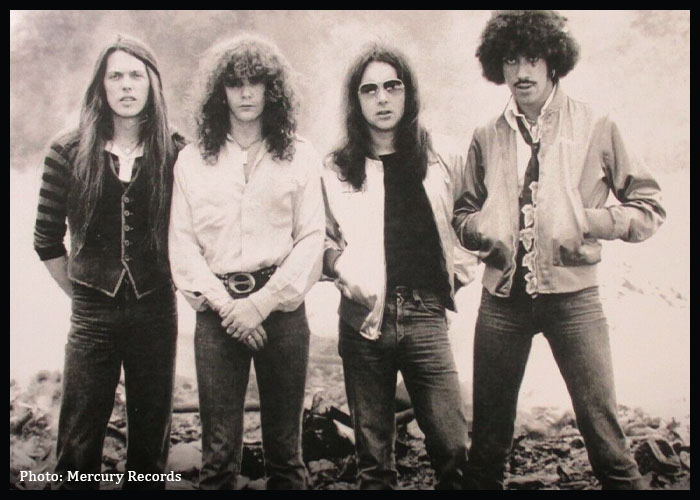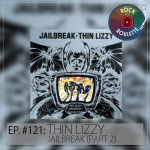
Episode 121 is here! We’re wrapping up our review of Thin Lizzy’s Jailbreak. Does side 2 seal the deal on this 1976 rock classic? Tune in for our final thoughts on the album’s epic storytelling and killer riffs!
Jailbreak is the sixth studio album by Irish hard rock band Thin Lizzy. It was released on 26 March 1976, by Vertigo Records. The album proved to be the band’s commercial breakthrough in the US, and the only Thin Lizzy album with a certification (in this case, Gold) in that country. The singles taken from the album include “Jailbreak” and “The Boys Are Back in Town“; the latter is Thin Lizzy’s biggest US hit, and won the 1976 NME Award for Best Single.
After their previous two albums, Nightlife and Fighting, failed to generate sales, Thin Lizzy were given one last chance by their label, Vertigo Records. The band wrote songs and collected ideas in a studio in Buckinghamshire in late 1975, then convened at Ramport Studios in London in the new year. They selected John Alcock as their producer, for he had worked in the studio extensively.
“When I wrote ‘Warriors‘…” frontman and songwriter Phil Lynott remarked in 1976, “the only way I could give any sense of heavy drug takers was by describing them as warriors; that they actually go out and do it. People like Hendrix and Duane Allman were perfectly aware of the position they were getting into. They weren’t slowly being hooked. It was a conscious decision to go out and take the thing as far as it can go.”
Initially, the song “Running Back” was chosen to be a single ahead of “The Boys Are Back in Town“, the latter being seen as possibly too aggressive for some radio stations to play. Lynott and producer John Alcock decided to employ session musicians to add more commercial elements to some of the tracks and try to produce a hit single, so Tim Hinkley was brought in to add keyboard parts to “Running Back“. Robertson was against the idea, as he liked the song as it had originally been arranged, in a blues format with his own additions of piano and bottleneck guitar. He later said, “I took enormous offence to [the changes].
Scott Gorham also revealed that “Romeo and the Lonely Girl” was also brought up as an option for a single, but was ultimately discarded, as “nobody was overexcited about it.”
Musicians
Phil Lynott – bass guitar, acoustic guitar, vocals
Scott Gorham – lead guitar, guitars
Brian Robertson – lead guitar, guitars
Brian Downey – drums, percussion
Additional Musicians
Tim Hinkley – keyboards on “Running Back” (uncredited)
Production
John Alcock – producer
Will Reid Dick – engineer
Neil Hornby – assistant engineer
Intro Music/Wheel Spin Music by LiteSaturation from Pixabay

Fair Use
* Copyright Disclaimer Under Section 107 of the Copyright Act 1976, allowance is made for "fair use" for purposes such as criticism, comment, news reporting, teaching, scholarship, and research. Fair use is a use permitted by copyright statute that might otherwise be infringing. Non-profit, educational, or personal use tips the balance in favor of fair use. No copyright infringement intended. ALL RIGHTS BELONG TO THEIR RESPECTIVE OWNERS
This is our musical reaction, breakdown, and commentary analysis of the song. We intend no copyright infringement, and this is not a replacement for listening to the artist's music. The content made available through this site is for educational and informational purposes only.
The site may contain copyrighted material owned by a third party, the use of which has not always been specifically authorized by the copyright owner. Notwithstanding a copyright owner’s rights under the Copyright Act, Section 107 of the Copyright Act allows limited use of copyrighted material without requiring permission from the rights holders, for purposes such as education, criticism, comment, news reporting, teaching, scholarship, and research. These so-called “fair uses” are permitted even if the use of the work would otherwise be infringing. *





